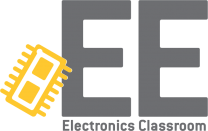
Training Center Classroom
Welcome to this installment of EE Classroom on Power Supplies
The growing demand for power supplies is fueled by markets across the board but the medical power supply market, in particular, is seeing especially strong growth. An increase focus in home healthcare equipment such as PAP devices, infusions pumps, pulse oximeters and other devices used in home care settings, as well as the launch of innovative medical power supply products are all contributing to a surge in power supplies overall. What do you need to know to choose? What are key considerations? How do you protect sensitive devices?
We are confident you’ll find answers to at least some of your questions with the resources in this classroom. Knowing that an electronics design engineer is not necessarily a power electronics engineer, we’ve included some back-to-basics around Power Factor Correction, power supply self-protection, different types of power supplies, and flyback converters. Is efficiency and EMC and EMI compliance keeping you up at night? Tuck in with some application notes and tutorials — it’s the stuff dreams are made of. Try finishing your day by digitally leafing through technical white papers on isolated dc-dc converters and their use in medical applications or “The AC/DC and DC/DC Book of Knowledge”.
Not seeing what you need here that could also be helpful to your engineering peers? Contact me at akalnoskas@wtwhmedia.com.

Editor in Chief, EE World Online




Basics of power-supply self-protection
Flyback power converters: basics, enhancements, and ICs
Know your power supply noise
There are some protection features built into power supplied to ensure that they do not “self-destruct” or damage associated circuitry.
Basics of Power Factor Correction
A focus on noise beginning with the system’s AC/DC supply, although many of the points apply to DC/DC supplies.
Among the many available topologies used for power-supply converters, the flyback design offers some distinct advantages along with unique idiosyncrasies.
Depending on the power level, some sort of correction to power factor may need to be added to the design.



You passed: getting products through EMC/EMI compliance tests
Optimizing the energy efficiency of converters and controllers
How power supply efficiency has evolved
Pre-compliance tests run in your own lab can avoid bad news when products go into formal conformity checks.
Here are a few of the changes in efficiency regulations the power supply industry can expect.
How to evaluate energy efficiency associated with components that make up widely used power conversion circuitry.
Basics • Projects



Transformer less AC to DC power supply
Designing an open loop isolated flyback converter
When low currents are needed to be drawn by the load circuit, X-rated non-polarity capacitors can also be used for AC to DC conversion.
Basic Electronics: Different types of power supplies
Design of an open loop flyback converter operating in CCM mode per CCM standard equations calculated for the desired output.
A basic understanding of power supplies — what gives life to any electronic circuit or device.